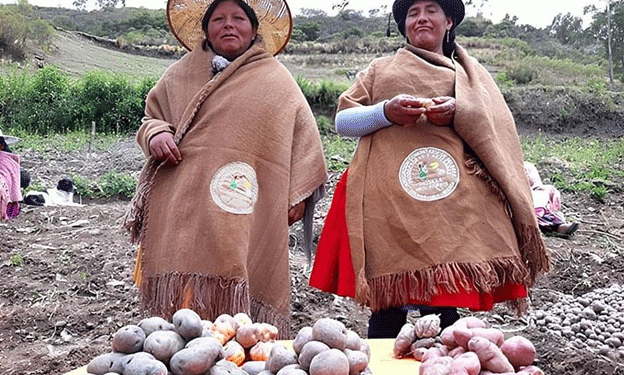Bolivia’s potato heritage is as rich as its diverse landscapes. With over 2,400 varieties of native potatoes, the country is a global center of potato biodiversity. These native varieties, often rich in antioxidants and other health-promoting compounds, represent a treasure trove of potential benefits for both food security and human health. However, a mere 30 of these varieties are regularly cultivated, with the rest at risk of disappearing due to low market demand, climate change, and a lack of technological support.
The Nutritional Power of Native Potatoes
Unlike commercial potato varieties, which are primarily white, cream, or yellow-fleshed and rich in carbohydrates, Bolivia’s native potatoes come in vibrant hues of red, purple, and blue. These colors are due to the presence of anthocyanins, powerful antioxidants that help prevent certain cancers and combat diseases related to aging. Native potatoes are also an excellent source of vitamins C, B1, and B3, as well as important minerals like potassium, iron, and zinc. Their skins are rich in fiber, making them a nutrient-dense option for health-conscious consumers.
Despite these benefits, native potatoes occupy only about 1% of Bolivia’s total potato production. The reasons for this are complex, ranging from limited market demand to the impact of climate change on traditional growing regions. Most native potatoes are grown in high-altitude areas, above 3,000 meters, where challenging conditions can make farming difficult. Additionally, because potato seeds cannot be stored like grains, they must be planted each year to be preserved, further complicating their conservation.
Climate Change and Its Impact
One of the greatest threats to native potato varieties is climate change. Irregular rainfall patterns, longer and more intense droughts, and the shifting timing of planting seasons are all putting pressure on traditional farming practices. For example, Solanum curtilobum, a species of native potato that thrives in cold conditions and is typically consumed as chuño or tunta (freeze-dried potatoes), requires intense winter cold to freeze to the core. However, rising temperatures are making it increasingly difficult to achieve this natural freeze-drying process, leading farmers to abandon its cultivation.
The unpredictable climate also exacerbates problems with pests and diseases, further threatening potato crops. For small-scale farmers, these challenges can be overwhelming, particularly when combined with limited access to irrigation, improved seeds, and modern farming technologies.
Efforts to Preserve Native Potatoes
Recognizing the critical need to protect Bolivia’s native potatoes, several organizations, including Fundación Proimpa, are working to promote their cultivation and consumption. Proimpa has been leading efforts for over 15 years, developing more than 20 projects aimed at improving seed quality, supporting farmer organizations, and linking native potato producers with food processing companies. These initiatives are beginning to bear fruit, with native potato varieties like pinta boca, candelero, yana qoyllu, and puka qoyllu making their way into the market and becoming part of the regular consumer offering.
In addition to increasing fresh consumption, Proimpa and its partners have explored new markets for processed native potato products. One successful initiative has been the introduction of native potato chips, which have found a niche in the snack food market. This diversification of products not only provides new income opportunities for farmers but also raises awareness of the nutritional and cultural value of Bolivia’s native potatoes.
Challenges Ahead
Despite these successes, much work remains to be done. The continued survival of Bolivia’s native potato varieties depends on several key factors: improving market access, enhancing productivity through better seeds and technologies, and increasing consumer awareness of the benefits of native potatoes. Ximena Cadima, coordinator of the Agrodiversity Program at Fundación Proimpa, emphasizes the need for concerted efforts:
“To avoid losing these varieties, we need to increase consumption and provide farmers with certified seeds and access to technology that allows them to produce more without harming the environment. Promotion is also crucial, as many people do not know about native potatoes or their properties. By consuming native potatoes, we can protect their biodiversity.”
The production data from Bolivia’s Sistema Integrado de Información Productiva (SIIP) shows that the country produces over 1.2 million tons of potatoes annually, but this figure primarily reflects commercial varieties. The absence of official data on native potato production highlights the need for better documentation and support for these underrepresented crops.
Bolivia’s native potatoes are a vital part of the country’s agricultural biodiversity, offering not only nutritional benefits but also a connection to cultural heritage. However, the challenges of climate change, market demand, and technological limitations threaten their survival. Through ongoing efforts to promote cultivation, improve production, and connect farmers with markets, organizations like Fundación Proimpa are working to ensure that these native varieties continue to thrive for generations to come.

